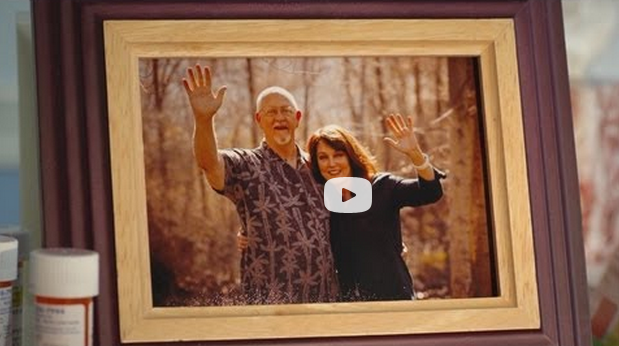For Pros: Joining with Teens in Therapy
/The other day I was going through some old grad school papers and I found the following short paper I wrote as a MFT student in 1996 when I didn't have very much experience working with adolescents. Looking back on it now 17 years later, even though I've certainly learned a lot since then as a specialist working with teens, I'm happy to say I was definitely on the right track.
Short Paper #4 Some Thoughts on the Importance of Joining with Adolescents as a Therapeutic Intervention
Jonathan Sherman Northern Illinois University FCNS 584--Dr. Linda Derscheid--December 2, 1996
I am quite comfortable around adolescents and generally connect very well with adolescents on many topics. However, the therapy setting is another story. I have limited experience working with adolescents in a therapeutic setting. This is the main reason I chose to do my internship with the DeKalb County Youth Services Bureau. The problem with therapy is that it automatically sets up a distinct hierarchy between the adolescent and myself that is foreign to me--they have to be there and by default I am part of the system that is making them be there. This sets up a relationship that is therapeutically unproductive. I have struggled with how to deal with this issue. In this paper I will address some of my thoughts on what I am finding that works best for me in my work with adolescents in the therapy setting.
I have found it helpful to stop trying to do therapy with adolescents who do not want to be in therapy. I realized that if I had to go to therapy when I was an adolescent I certainly would not have wanted to be there. Also, if some therapist thought he/she could get inside my head I would have been happy to show them how ineffective their methods would have been on me. How “cooperative” would you be if you were in their shoes. Given that, why would I expect any of the adolescents I am working with to feel any differently than I would have felt? So I stopped asking therapy related questions and just started talking with them. I have been telling them up front that I realize they have to be here in therapy and that it is likely the last place they want to be. I also realize that I can’t make them talk if they don’t want to and that I’m not going to try. I tell them that if they feel like telling me something then I would be happy to listen, but for now I don’t see why they would want to as they don’t know me and why would they trust me in the first place since they don’t even know who I am? I tell them I don’t feel it would be respectful to them to try to make them talk when they didn’t feel like talking or if I tried to make them tell me things they didn’t want to tell me. I further tell them that if their main goal is to get out of having to come to therapy, and out of the legal system, I can help them figure out the fastest way to get it all over and done with. “Get me working for you instead of me working for the system that is making you be here,” I tell them. This statement can help mobilize the adolescent to become more responsible for his/her own actions and life which Ambert (1995) points out as a key roadblock to overcome. This goal leaves the door open to approach therapeutic issues when able and keeps the therapy from becoming only a place to chat. When all that is laid out on the table and they know where I stand I have found that the adolescents I’ve been working with, who have histories of claming up in therapy, talk freely about what they like to do. It’s not “therapy” in the traditional sense, but they are talking to me, which to me is vital in our talk-oriented business. It is also more enjoyable for the adolescent who isn’t dreading the ultra-boring hour of therapy with some bozo who is constantly, and futilely, drilling him/her for information. So we chat about nothing in particular and I’ve been noticing that in the course of this “non-therapeutic” chatter these adolescents are telling me bits and pieces of information that are related to therapy.
Offer and Schonert-Reichl (1992) point out that one of the primary factors a adolescent considers when seeking help from another is the characteristics of that person. It is reasonable to assume that they are more likely to seek help from someone when they know they are understood and respected by that person. The key is respecting their world (and doing so genuinely and not as a technique). All the interventions in the world are useless until this base is first established. It is really unrealistic for therapists to expect most adolescents to want to cooperate in a therapeutic setting. When they are uncooperative they are labeled resistant. Often these kids are seen as resistant which seems to be a cop out for the therapist who is trying to bypass laying this essential foundation. I have yet to meet a 13-year-old who wants to spill his guts to some stranger who is trying to get him to say and/or do things he’s not the least bit interested in a place he doesn’t want to be. When I was 13-years-old I wouldn’t have. So I am learning to respect and honor the adolescents resistance recognizing that underneath it is anger, mistrust, fear, etc. I engage them with respect and stroke the resistance and validate that it is understandable that this adolescent wouldn’t trust me and I don’t expect him/her to for a good while. I want to get to know this person, their world, what they like. Does he/she like to draw? I will ask him/her to draw a picture of anything they like or a picture of how they feel about coming to see me or a picture of their family which will give me an opening and he/she can tell me about the drawing.. I like to work with adolescents using the “mirroring process” as a way to build rapport, safety, trust, and connection and adolescents usually like to be mirrored as this is something that they often do not receive. The mirroring process can be an effective way to connect with a adolescent. Adolescents really want to be listened to and be heard and understood where they are coming from, from their world. I believe if I can enter into the world of the other and look around briefly and gain an understanding and share this with adolescents, that this will build trust, safety and connection. As Butman and Arp (1990) point out, adolescents desire respect and support from adults. This is an important element of joining.
In conclusion, the process of joining is an intervention I have found useful in my work with adolescents in therapy. Through this joining process I have been able to assess strengths and problems and encourage verbal interaction with the adolescent that other means have not allowed me to do with them.
References
Ambert, A. M. (1995). A critical perspective on the research on parents and adolescents: Implications for research, intervention, and policy. In D. H. Demo and A. M. Ambert (Eds.), Parents and adolescents in changing families, (pp. 291-305). Minneapolis: National Council on Family Relations.
Butman, R. E., & Arp, J. H. (1990). Adolescent depression in its developmental and maturational context. Journal of Psychology and Christianity, 9, 34-43.
Offer, D., & Schonert-Reichl, K. A. (1992). Debunking the myths of adolescence: Findings from recent research. Journal of the American Academy of Child and Adolescent Psychiatry, 31, 1003-1014.















































